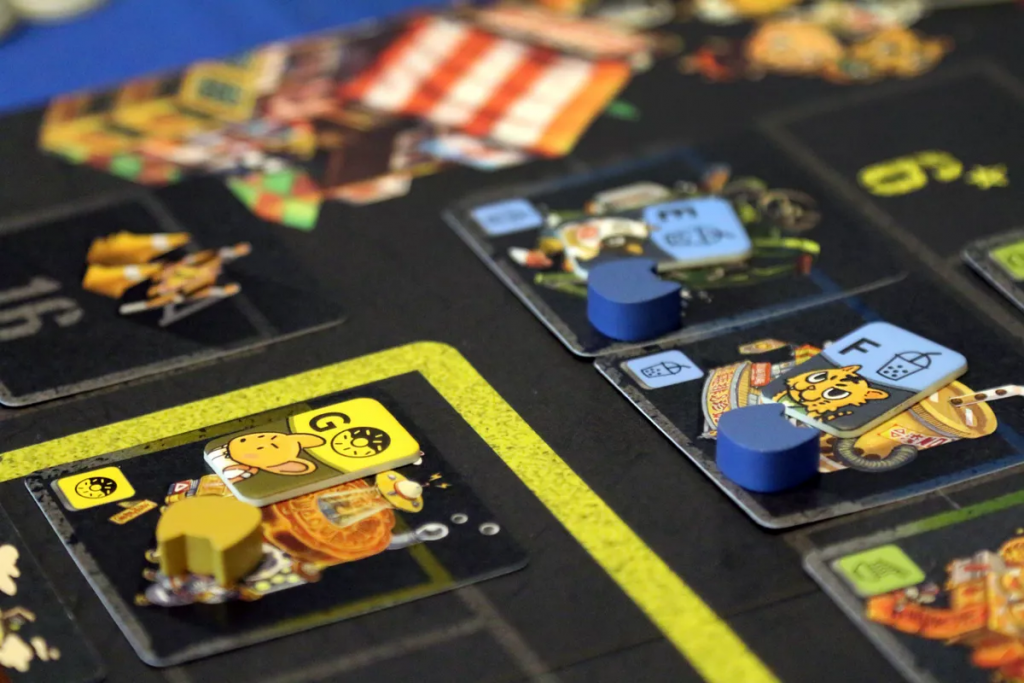“Make your wreckland run in this solo hero series game!”
Link: https://boardgamegeek.com/boardgame/353411/wreckland-run
Playing Time: 30-45
Weight: Midweight
Genre: Solo Dice Manipulation
Designer: Scott Almes
Players: 1

Scott Almes is most well-known for his ‘Tiny Epic’ line of games, but for my money, his best title is this one, a little known solo-only game that launched with very little fanfare. In this multi-chapter campaign, players will take a Mad Max journey across an irradiated wasteland, all the while beating off a series of baddies and killing bosses. In between battles, they’ll upgrade their car to prepare for bigger, badder bosses.
The core combat is pure dice-chucking. Players will equip their car with weaponry on the 8 compass points around their car, each with a corresponding die number. Enemies will attempt to surround the car. The player will roll dice, and activate them in order to use their weapons to attack their opponents (as well as other effects like heal or herd the attacking cars). If they damage the cars with exactsies, they’ll earn scrap, which can be used to repair or upgrade the car between battles – or perhaps do an extra action during one.
The core campaign is six missions long (although extended by the expansion) but the core box contains several base vehicles, each of which play very differently (and are further manipulated by several drivers with different powers). The end result is a game that you should definitely check out if you like solo gaming, mad max, and rolling fistfuls of dice.














Recent Comments